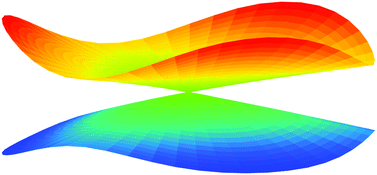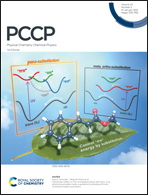A fundamental invariant-neural network representation of quasi-diabatic Hamiltonians for the two lowest states of H3
Abstract
The fundamental invariant neural network (FI-NN) approach is developed to represent coupled potential energy surfaces in quasidiabatic representations with two-dimensional irreducible representations of the complete nuclear permutation and inversion (CNPI) group. The particular symmetry properties of the diabatic potential energy matrix of H3 for the 1A′ and 2A′ electronic states were resolved arising from the E symmetry in the D3h point group. This FI-NN framework with symmetry adaption is used to construct a new quasidiabatic representation of H3, which reproduces accurately the ab initio energies and derivative information with perfect symmetry behaviors and extremely small fitting errors. The quantum dynamics results on the new FI-NN diabatic PESs give rise to accurate oscillation patterns in the product state-resolved differential cross sections. These results strongly support the accuracy and efficiency of the FI-NN approach to construct reliable diabatic representations with complicated symmetry problems.

- This article is part of the themed collection: Emerging AI Approaches in Physical Chemistry


 Please wait while we load your content...
Please wait while we load your content...